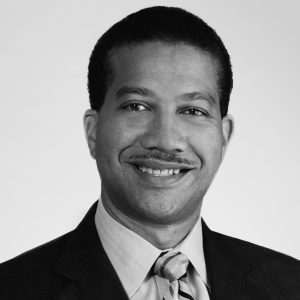By Roderick King, MD/MPH, CEO, Florida Institute for Health Innovation, Assistant Dean of Public Health Education, Director — MD/MPH Program at University of Miami MIller School of Medicine and Jennifer Tescher, President & CEO, Financial Health Network
Poor physical and financial health overwhelmingly go hand in hand. Financial insecurity leads to toxic stress and chronic disease while, in turn, poor health can lead to devastating medical expenses and financial ruin.
Mounting evidence is raising the stakes. A recent study found that people in middle or older age who are faced with a sharp drop in wealth are nearly 50 percent more likely to die in the next 20 years. Another study has found that for a substantial number of Americans, a trip to the hospital can mean a permanent reduction in income, demonstrating the limitations of health insurance against financial shocks such as illness or medical emergency. These sobering facts suggest that solutions will require cross-sector collaboration to achieve systems change.
It requires building and embracing a culture of health.

The public health sector has been focused on the culture of health for some time, recognizing that a host of factors beyond health care determine what makes for a healthy community — housing, transportation, childcare, food security, education, and financial health. Meanwhile, the financial services sector is increasingly focused on improving the financial health of its customers, and providers are beginning to recognize broader determinants beyond finance that shape their consumers’ lives.
These two fields have an opportunity to join forces around a common framework, one with “health” at the center. Cross-sector collaboration can create systems that are more consumer-centric and outcomes-focused, resulting in better and more equitable physical health and financial health for individuals, families, and communities.
However, major barriers exist between motivation and action. The health care sector and the financial health field are both busy with their own challenges, and they lack natural opportunities to share ideas or generate new ones together.
To start, more work needs to be done to understand the “why” behind the connection between physical and financial health. There is no shortage of data on both kinds of health, but little that enables correlations to be drawn. Financial Health Network is taking a first step in this direction through its new U.S. Financial Health Pulse. The study will provide an ongoing snapshot of the financial lives of Americans, and in addition, will include a few critical measures of physical health.
The connections are getting more specific as more analysis is done.
For example, we’re learning that cash flow is a significant driver for the health care decisions and behaviors of families. Households are either delaying medical treatment or delaying payment for treatment until they are able to pay, like when they have more income infusions, such as tax time, according to a recent report by JPMorgan Chase & Co. Understanding the dynamics of cash flow, income volatility, and their influence on consumer behavior reveals opportunities for financial service providers, insurers, employers, health care providers, startups, and others to collaborate and design solutions and experiences that help consumers receive care when they need it.
Progress requires envisioning a bold, integrated system for consumers and their communities.
As the burden of health care expenses increasingly falls to patients, payment delinquencies often result, translating to sustainability challenges for health care providers. Alternatively, when patients are forced to choose between paying for critical medical expenses and paying off a mortgage or other debt, the health of the financial services industry is also in jeopardy. Financial service innovation and delivery can help improve the overall viability of both industries by enabling patients to better understand, plan for, manage, and pay for their health care expenses.
What if…
> Patients were screened by health care providers for not only physical but financial health measures?

> Consumers were provided with a complete, transparent, and easy-to-understand picture of the costs of treatment in one place before they are incurred, allowing them to make informed health decisions?
> Employees were offered tools and products by their employers to help them better understand their health plans, smooth their income, and prepare for health care costs?
> Consumers were offered high-quality, flexible bill payment and financing options to align with their cash flows?
Although nascent, partnerships and innovations are emerging at the community level leveraging the relationship between financial health and physical health. For example, hospitals, community health centers, and health care providers are working to connect their patients with services that support individuals’ ability to manage their finances effectively and access financial products and tools to help them save.
The evidence base about how financial health interventions can improve physical health (and vice versa) is at an early stage but promising. Now is the time for stakeholders to invest in learning more about these critical connections and form new, brave partnerships to test their collective impact on the health and wealth of their communities.
Originally published in Financial Health Network’s 2018 EMERGE magazine.
By Financial Health Network on August 9, 2018.

